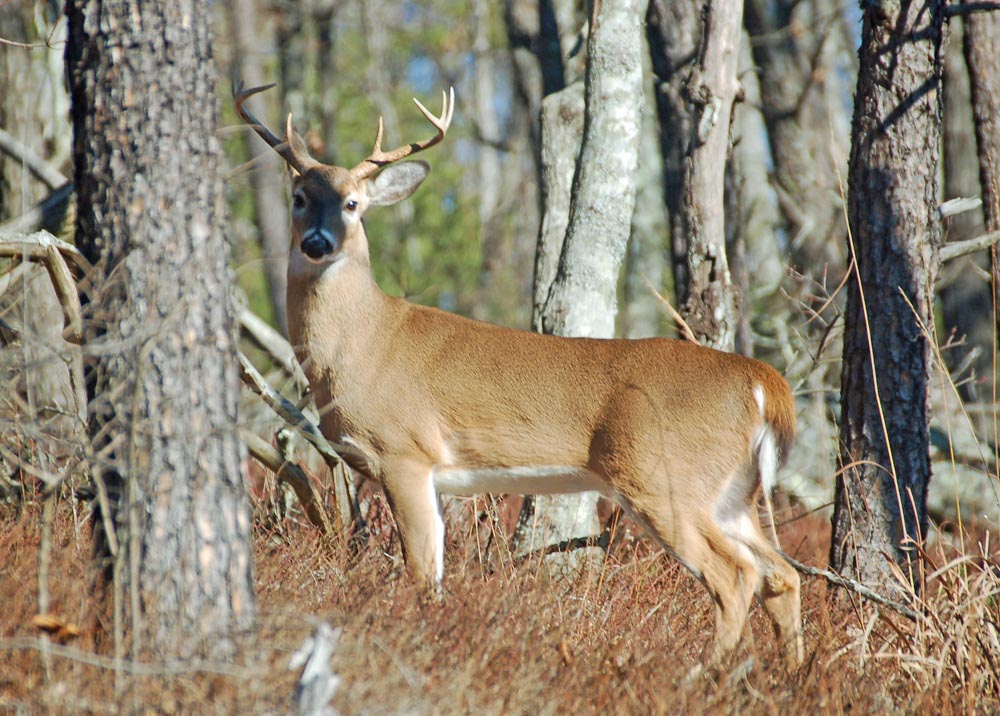Below is a news release from the Alabama Department of Conservation and Natural Resources.
A sample recently collected from a hunter harvested, white-tailed deer in west-central Lauderdale County has been confirmed positive for Chronic Wasting Disease (CWD). This is the first case of CWD detected in Alabama’s deer herd.
“CWD was first detected in Tennessee and Mississippi in 2018 and has been moving slowly toward Alabama,” said Chris Blankenship, Commissioner of the Alabama Department of Conservation and Natural Resources (ADCNR). “The Department has implemented multiple proactive regulations to combat the spread into Alabama. Compliance from the public on those measures helped delay the spread into the state for several years.”
CWD is a member of the group of diseases called transmissible spongiform encephalopathies (TSEs). CWD among cervids is a progressive, fatal disease that commonly results in altered behavior due to microscopic changes made to the brain of affected animals. An animal may carry the disease for years without outward indication. In latter stages of the disease, signs may include listlessness, lowering of the head, weight loss, repetitive walking in set patterns and a lack of responsiveness.
The sample from the CWD-positive deer was submitted as part of the state’s ongoing CWD surveillance and volunteer testing program. Preliminary tests performed at the Alabama Department of Agriculture and Industries discovered the non-negative case, which was then confirmed positive by the National Veterinary Services Laboratories in Ames, Iowa.
“I would like to thank the hunters for their voluntary assistance in providing samples for CWD testing and we need hunters now more than ever,” said Commissioner Blankenship. “We take the presence of this disease very seriously which is why we developed a plan of action using CWD best practices to deal with the disease if or when it was discovered in Alabama. The plan was developed in cooperation with the Alabama Department of Agriculture and Industries, other state and federal agencies and various stakeholder groups. We are currently working with our partner agencies and hunters to implement that plan. Our staff is prepared, and the Department will do whatever is prudent and reasonable to protect the state’s deer resources and our hunting culture.”
Due to CWD detection in Lauderdale County, ADCNR has enacted a new regulation for Lauderdale and Colbert counties, as outlined in Alabama’s CWD Surveillance and Response Plan. All of Lauderdale and Colbert counties are designated as a CWD Management Zone (CMZ). The area west of U.S. Highway 43 in Lauderdale County to the Mississippi and Tennessee state lines and south to the Tennessee River is designated as a High-Risk Zone (HRZ). The remainder of Lauderdale County and all of Colbert County is designated as a Buffer Zone.
Within the CMZ, there will be no seasonal or daily bag limit restrictions and no antler restrictions for deer (antlered and unantlered) harvested on privately-owned or open-permit public lands in Lauderdale or Colbert counties through the remainder of the 2021-2022 deer season. This also includes the following Wildlife Management Areas (WMA) and Community Hunting Area (CHA), Lauderdale WMA, Freedom Hills WMA, Riverton CHA, and Seven-Mile Island WMA. On those WMAs, hunters will be allowed to harvest any deer daily through February 10, 2022. These changes do not apply to any other county, WMA or CHA in the state.
Hunters are required to submit heads for CWD testing from all deer harvested within the HRZ in Lauderdale County at drop-off freezer locations or at scheduled ADCNR mobile sampling stations. Hunters who harvest deer within the Buffer Zone are highly encouraged to submit heads for sampling at drop-off freezer locations within the CMZ.
It is critical that hunters understand the movement of harvested deer will be limited within the management zone. Deer harvested within the HRZ must remain and be disposed of within the HRZ. Deer harvested within the Buffer Zone must remain and be disposed of within the CMZ. Deboned meat, cleaned skull plates and raw hides with no visible brain or spinal cord tissue may be taken outside of these zones. Transporting deer carcasses out of the management zone can potentially spread CWD to currently unaffected areas.
Hunting license and Game Check requirements remain in effect for all white-tailed deer harvests.
“Now that we have detected CWD in Alabama, our primary objective is to determine the prevalence of the disease in the area affected,” said Chuck Sykes, Director of ADCNR’s Wildlife and Freshwater Fisheries Division. “The new regulation is intended to increase the opportunities for hunters to supply samples for CWD testing. We need hunters to continue to hunt and submit deer heads for testing. These additional samples will help us better determine the extent of the disease in this area.”
Additional details pertaining to Game Check, the new regulation and guidance on best management practices for transportation, disposal and testing of harvest for each zone can be found at www.outdooralabama.com/cwd-info.
(Photo credit: David Rainer/Alabama Department of Conservation and Natural Resources)
